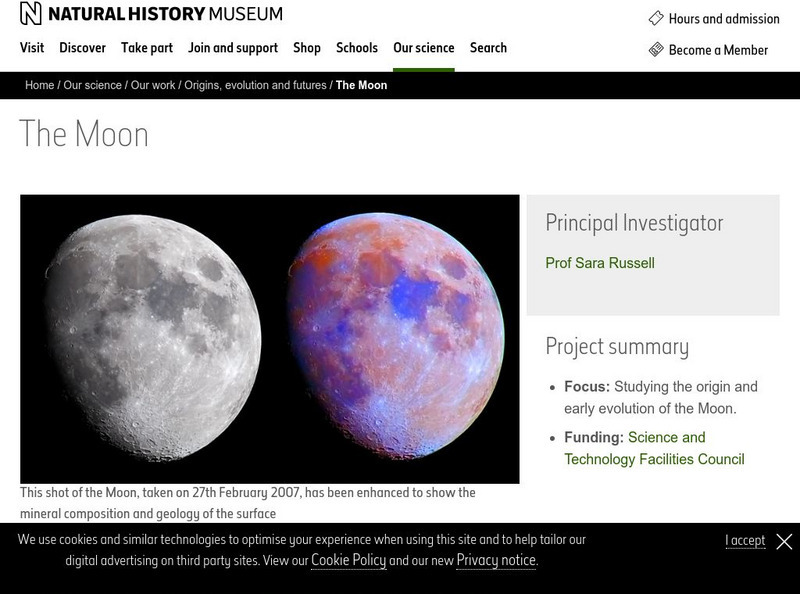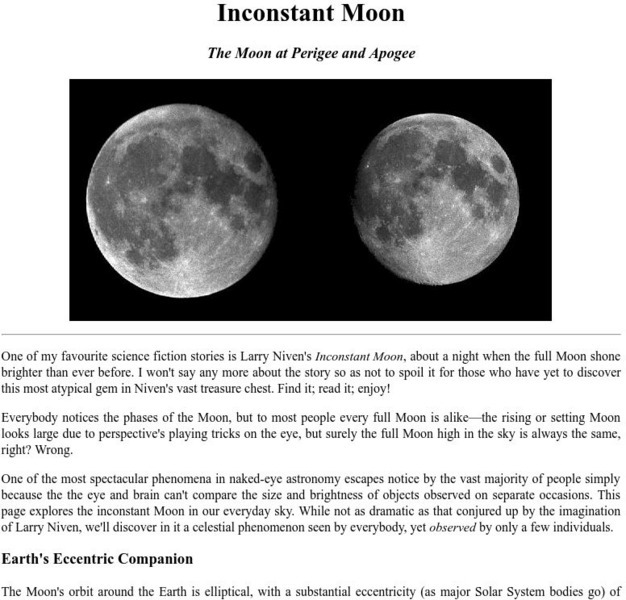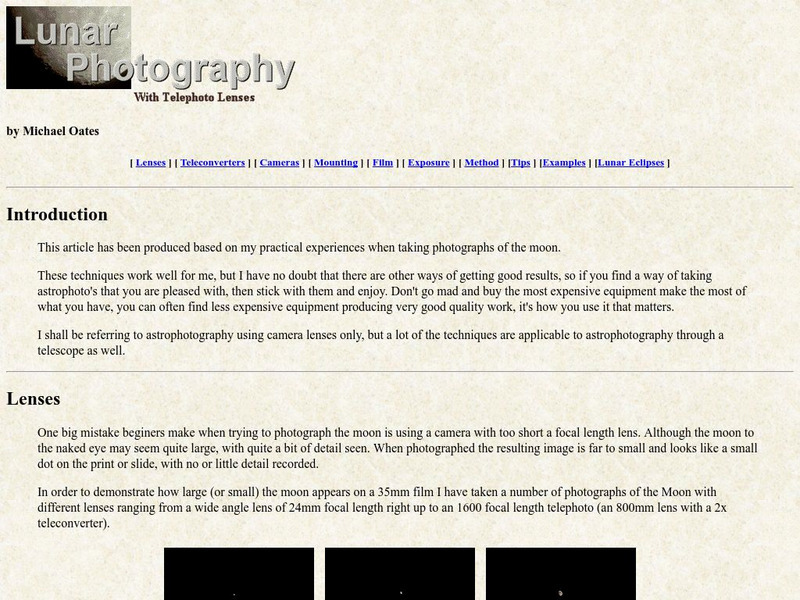Hi, what do you want to do?
NASA
Nasa: Packing Up for the Moon Educator Guide
Use these lessons to help students understand more about the preparation it takes to go to the moon. Students will play an active part in decided what to take to the moon when given a specific objective. Includes PDF's (require Adobe...
NASA
Nasa: Earth's Moon: Overview: Our Natural Satellite
Prepared by NASA, this site provides a detailed look at the Earth's moon. The menu tabs are divided into overview, photo gallery, and facts and figures.
Utah Education Network
Uen: Trb 3:1 Investigation 3 What Is Moonlight?
Understand that the moon shines by reflecting sunlight.
Utah Education Network
Uen: Trb 3:1 Investigation 1 Comparing the Earth & Moon
Third graders compare the earth and the moon in this activity.
Utah Education Network
Uen: Bouncing Sunlight
The light we see from the moon at night is light that the moon reflects from the sun.
PBS
Pbs Learning Media: Phases of the Moon
When we look up at the night sky, why do we see the Moon's appearance changing over time from a full sphere to a crescent to nothing at all? Find the answers in this interactive resource adapted from the National Air and Space Museum.
PBS
Pbs Learning Media: Why Doesn't the Moon Fall Down?
In this animated video segment adapted from NASA, astronomer Doris Daou explains how the forces of speed and gravity keep the moon in a constant orbit around Earth. [1:36]
PBS
Pbs Learning Media: Explore the Moon
See what it is like to walk on the moon by viewing this collection of QuickTime images from NOVA Online. Stunning 360-degree panoramas from each of the six successful Apollo moon landings are featured.
Utah State Office of Education
Utah Science: What's Up There Anyway?
Far out there we observe the moon, its phases, and its constant changing position as we sit on a swing in the backyard. Investigate the science behind the moon through the activities provided.
Digital Public Library of America
Dpla: Race to the Moon
In 1955, the US and the USSR each announced plans to launch a satellite into orbit. Thus began the race to the moon. Throughout the 1960s and 1970s, the American space program and its new classes of astronauts achieved breakthroughs in...
Natural History Museum
Natural History Museum: The Moon
A study of the moon that centers on its origin, its structure, and its behavior.
Fourmilab Switzerland
John Walker: Inconstant Moon: Moon at Perigee and Apogee
Most people think of every full moon as appearing the same, but careful observation allows us to see that sometimes the Moon appears larger than at others. This is caused by the elliptical orbit of our natural satellite.
Extreme Science
Extreme Science: The Moon
Read about the birth of Earth's moon, its composition, orbit, visible phases, and other interesting facts. Link to a virtual moon phase interactive which shows the current lunar phase and the phase on any date in the past or future.
Library of Congress
Loc: Poetry 180: The Moon
This one-stanza poem describes a half-moon in an original way.
PBS
Pbs Learning Media: Earth and Moon
Students are asked to compare and contrast the earth and the moon.
PBS
Pbs Learning Media: Moon Movement
Students are asked to explain why the moon appears in this particular form in the video clip.
American Museum of Natural History
American Museum of Natural History: O Logy: Stuff to Do: Moon Watch Flip Book
Hands-on activity shows you how to make a flip book of the moon using close observation skills and simple materials. Includes animation that lets you view the moon in action through its different phases, worksheets, and illustrated...
Spongelab Interactive
Spongelab Interactive: Nasa: Grail & the Moon
[Free Registration/Login Required] A website dedicated to exploring the Grail spacecraft and its mission to the moon. Students can learn about the scientific investigations the Grail is performing to learn more about the moon.
NASA
Nasa: Space Place: Dr. Marc Answers Questions About Earth & Moon
Discover facts about the Earth and the Moon with NASA scientist, Dr. Marc Rayman.
Other
Mas: Lunar Photography With Telephoto Lenses
Ever taken a picture of a nice large full Moon, only to find that it looks like a small dot on your finished photograph? This site explains why, and offers tips on taking good pictures of the Moon.
Other
Why Does the Moon Go Through a Cycle of Phases?
In this thorough lesson plan site, the various phases of the moon are examined. Objectives are listed, procedures are clearly outlined, and there are links to worthwhile supplementary sites.
Harvard University
Harvard University: Eyes on the Sky, Feet on the Ground: The Earth's Moon
In this online textbook, students explore the phases of the moon, the moon's orbit, the origin of the moon, and the tides. Includes numerous inquiry-based activities.
Yale University
Yale University: Adventures of Geo: To the Moon
The main characters of this comic flip book explore Earth science. In this book travel to the moon with Geo and his friends.
















